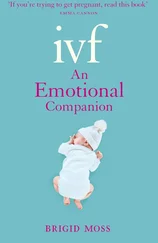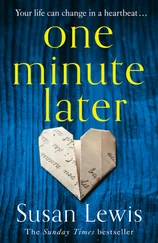The prevalence of trauma exposure among youth is a major public health concern. Youth who have been exposed to trauma, whether a one-time event or repeated, can respond by withdrawing from others or they can be the students who threaten others or start fights. Youth affected by trauma can also have a decreased IQ and reading ability, lower grade-point average (GPA), more days of school absence, and decreased rates of high school graduation. 32 , 33 Evidence suggests that youth exposed to trauma have decreased social competence and increased rates of peer rejection. 34 Like conduct disorder symptoms, the behavior of these students often challenges the patience of educators. In these cases we encourage teachers to think, “What happened to you?” instead of “What's wrong with you?” 35 If you notice students exhibiting characteristics that may indicate any of these mental illnesses, do refer them to your counseling staff for assessment because they may need additional intervention to be successful in school.
1 1. www.mentalhealth.gov
2 2.Twenge, J. M., Cooper, A. B., Joiner, T. E., Duffy, M. E., and Binau, S. G. (2019). Age, period, and cohort trends in mood disorder indicators and suicide-related outcomes in a nationally representative dataset, 2005–2017. Journal of Abnormal Psychology 128(3): 185.
3 3.Plemmons, G., Hall, M., Doupnik, S., et al. Hospitalization for suicide ideation or attempt: 2008–2015. (2018). Pediatrics 141(6): e20172426. doi:10.1542/peds.2017-2426. https://pubmed.ncbi.nlm.nih.gov/29769243/
4 4.Seabrook, E. M., Kern, M. L., Rickard, N. S. (2016, Nov 23). Social networking sites, depression, and anxiety: A systematic review. JMIR Mental Health 3(4): e50. doi:10.2196/mental.5842 https://www.ncbi.nlm.nih.gov/pmc/articles/PMC5143470/
5 5.Primack, B. A., Shensa, A., Escobar-Viera, C. G., Barrett, E. L., Sidani, J. E., Colditz, J. B., and James, A. E. (2017, Apr). Use of multiple social media platforms and symptoms of depression and anxiety: A nationally representative study among US young adults. Computers in Human Behavior 69, 1–9. https://doi.org/10.1016/j.chb.2016.11.013
6 6.Kessler, R. C., Angermeyer, M., Anthony, J. C., et al. (2007). Lifetime prevalence and age-of-onset distributions of mental disorders in the World Health Organization's World Mental Health Survey Initiative. World Psychiatry 6(3): 168–76.
7 7.Rose, M. E. (2018). Are prescription opioids driving the opioid crisis? Assumptions vs facts. Pain Med 19 (4, April): 793-807. https://www.ncbi.nlm.nih.gov/pmc/articles/PMC6018937/; or Manchikanti, L., and Singh, A. (2008). Therapeutic opioids: a ten-year perspective on the complexities and complications of the escalating use, abuse, and nonmedical use of opioids. Pain Physician 11(2 Suppl): S63–S88 https://pubmed.ncbi.nlm.nih.gov/18443641/
8 8.Elofson J., Gongvatana, W., Carey, K. B. (2013, Jul). Alcohol use and cerebral white matter compromise in adolescence. Addictive Behaviors 38(7): 2295–2305. doi: 10.1016/j.addbeh.2013.03.001. Epub 2013 Mar 15. PMID: 23583835; PMCID: PMC3699185
9 9.Ammerman, S. (2014). Marijuana. Adolescent Medicine: State of the Art Reviews 25(1):70–88. PMID: 25022187
10 10.NIDA. (2020, April 8). What is the scope of marijuana use in the United States? Retrieved January 14, 2021, from https://www.drugabuse.gov/publications/research-reports/marijuana/what-scope-marijuana-use-in-united-states
11 11.Pierre, J. M. (2017). Risks of increasingly potent Cannabis: The joint effects of potency and frequency. Current Psychiatry 16(2): 14–20. https://www.researchgate.net/publication/316647633_Risks_of_increasingly_potent_Cannabis_The_joint_effects_of_potency_and_frequency
12 12.Ibid.
13 13.University of British Columbia. (2020, Nov 2). Teens who participate in extracurriculars, get less screen time, have better mental health. ScienceDaily. Retrieved November 21, 2020, from www.sciencedaily.com/releases/2020/11/201102124849.htm
14 14.Trinh, L., Wong, B., & Faulkner, G. E. (2015). The independent and interactive associations of screen time and physical activity on mental health, school connectedness and academic achievement among a population-based sample of youth. Journal of the Canadian Academy of Child and Adolescent Psychiatry 24(1), 17.
15 15.Pine Rest Christian Mental Health Services, June 2020.
16 16.American Psychiatric Association. (2013). Diagnostic and statistical manual of mental disorders (DSM-5®). American Psychiatric Publishing.
17 17.Ibid.
18 18.Center for Substance Abuse Treatment. (2005). Substance Abuse Treatment for Persons with Co-Occurring Disorders. Rockville, MD: Substance Abuse and Mental Health Services Administration (US). (Treatment Improvement Protocol (TIP) Series, No. 42.) Table: What Counselors Should Know About Mood and Anxiety Disorders and Substance Abuse]. https://www.ncbi.nlm.nih.gov/books/NBK64204/table/A75086/
19 19.2017 National Survey on Drug Use and Health.
20 20.INSERM Collective Expertise Centre. (2005). INSERM Collective Expert Reports. Paris: Institut national de la santé et de la recherche médicale; 2000-. Conduct: Disorder in children and adolescents. https://www.ncbi.nlm.nih.gov/books/NBK7133/
21 21.DSM-5.
22 22.NIDA. (2020, June 25). The science of drug use and addiction: The basics. Retrieved September 2020 from https://www.drugabuse.gov/publications/media-guide/science-drug-use-addiction-basics
23 23.Harris, E. C., Barraclough, B. (1997). Suicide as an outcome for mental disorders: A meta-analysis. British Journal of Psychiatry 170(3): 205–228. doi: 10.1192/bjp.170.3.205
24 24.Centers for Disease Control and Prevention. (2018). Surveillance for Violent Deaths: National Violent Death Reporting System, 18 States, 2014. Morbidity and Mortality Weekly Report 67(2), 1–36.
25 25.Mischoulon, D., Eddy, K. T., Keshaviah, A., Dinescu, D., Ross, S. L., Kass, A. E., Franko, D. L., and Herzog, D. B. (2011). Depression and eating disorders: Treatment and course. Journal of Affective Disorders 130(3), 470–477. https://doi.org/10.1016/j.jad.2010.10.043
26 26.Harris, E. C., Barraclough B. (1997). Suicide as an outcome for mental disorders: a meta-analysis. British Journal of Psychiatry 170(3): 205–228. doi: 10.1192/bjp.170.3.205
27 27.Hamilton, G., Culler, L., Elenback, R., and Ekern, J. (2015). Anorexia nervosa – highest mortality rate of any mental disorder: Why? Eating Disorder Hope. https://www.eatingdisorderhope.com/information/anorexia/anorexia-death-rate
28 28.National Institute of Mental Health. Schizophrenia. https://www.nimh.nih.gov/health/topics/schizophrenia/index.shtml
29 29.Child Mind Institute. Anxiety. https://childmind.org/guide/anxiety-basics/
30 30. https://www.nimh.nih.gov/health/statistics/any-anxiety-disorder.shtml#part_155096
31 31.Teens Health. kidshealth.org/en/teens/ptsd.html
32 32.Delaney-Black, V., Covington, C., Ondersma, S. J., Nordstrom-Klee, B., Templin, T., Ager, J., Janisse, J., and Sokol, R.J. (2002, Mar). Violence exposure, trauma, and IQ and/or reading deficits among urban children. Archives of Pediatrics and Adolescent Medicine 156(3): 280–85.
33 33.Putnam, F. W., and Trickett, P. K. (1997, Jun 21). Psychobiological effects of sexual abuse. A longitudinal study. Annals of the New York Academy of Sciences 821(1): 150–59. https://pubmed.ncbi.nlm.nih.gov/9238201/
34 34.Schwartz, D., and Proctor, L.J. (2000, Aug). Community violence exposure and children's social adjustment in the school peer group: The mediating roles of emotion regulation and social cognition. Journal of Consulting and Clinical Psychology 68(4): 670–83.
35 35. https://www.acesconnection.com/
Конец ознакомительного фрагмента.
Текст предоставлен ООО «ЛитРес».
Читать дальше












